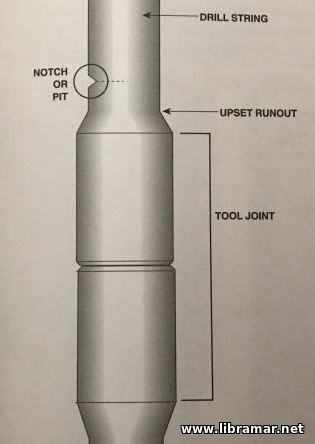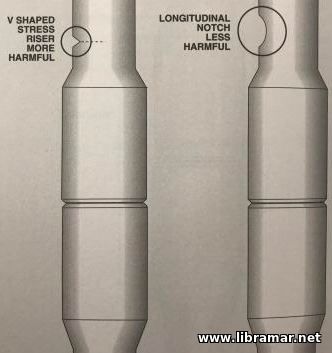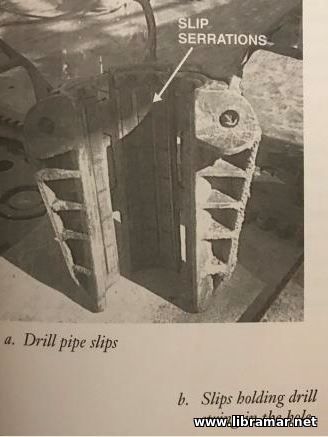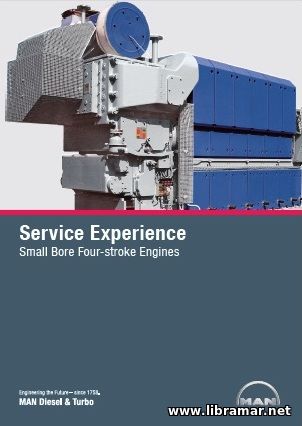Notch Failure of the Drill String

Surface imperfections in the drill pipe metal greatly affect the fatigue limit of the metal. Imperfections can be mechanical or metallurgical. A notch or pit concentrates the stresses encountered during drilling and speeds the breakdown of the metal structure. They are, therefore, referred to as stress risers, or stress concentrators. Where the notch or pit appears on the drill pipe determines how much it will affect the fatigue limit of the pipe. If a notch is on a portion of drill pipe not subject to stress, the notch has little effect. If a notch is within twenty inches of a tool joint in the pipe’s upset runout, where maximum bending takes place, it can form the nucleus of an early fatigue break.
The shape and type of notch or scratch is also important. A longitudinal notch, an extensive saucer with a rounded bottom, will distribute the stress and be relatively harmless whereas a minute scratch with a sharp bottom will act as a stress riser and lead to failure.
Some steel is more sensitive to notches as other steel; notched brittle steel fails more quickly than ductile steel. Various surface dents and scratches that can cause eventual drill pipe failure include the tong marks and slip marks, cuts, scratches, spinning chain marks and scratches, stencil markings, hammer marks, corrosion grooves caused by rubber protectors, electric arc burns, and downhole notching caused by formation and junk cuts.
dents and scratches that can cause eventual drill pipe failure include the tong marks and slip marks, cuts, scratches, spinning chain marks and scratches, stencil markings, hammer marks, corrosion grooves caused by rubber protectors, electric arc burns, and downhole notching caused by formation and junk cuts.
Of all these defects, tong marks although rare, are probably the most damaging marks produced on drill pipe in the field. They are long, deep, and frequently sharped. Because such notches are longitudinal, they may not lead to notch failure. Even a slight deviation from vertical in the wellbore, however, can change the stress on the pipe and longitudinal notches can become stress concentrators. A change in the wellbore from vertical alters the stress along the defect from longitudinal to transverse. Tongs, therefore, should be applied to the tool joint, never to the body of the drill pipe, because the toll joint is thicker than is the pipe itself. In addition, applying tongs to drill pipe body may crush the pipe as well as notch it.
Rotary slips are made with fine serrations and are used to hold the pipe in place and to prevent it from slipping down into the hole when a connection is being made or broken out. The slips can, however, score the pipe if they are mistreated, worn, or carelessly handled. Slips with worn, mismatched, incorrectly sized, or improperly installed gripping elements can allow one or two teeth or portions of the teeth to catch the full load of the drill string, thereby causing deep notching and potential failure.
 Inasmuch as any transverse mark can be a dangerous stress concentration point, it is not surprising that steel stencil marks can be the start of fatigue when parts of the letter are transverse to the pipe and the steel stamp is in the wrong place. Never steel stencil on the drill pipe tube.
Inasmuch as any transverse mark can be a dangerous stress concentration point, it is not surprising that steel stencil marks can be the start of fatigue when parts of the letter are transverse to the pipe and the steel stamp is in the wrong place. Never steel stencil on the drill pipe tube.
Corrosion at the top of the rubber pipe protectors can produce a circumferential groove. These grooves can lead to failure. Modern protectors are designed to minimize this risk. Because the protectors usually produce the grooves when they are left on the pipe while the pipe is in storage, the IADC recommends removing them before placing pipe in storage.
Welders sometimes attach the ground lead to the pipe rack instead of to the material being welded. This action is particularly dangerous in that the subsequent arcing between the rail and the drill pipe goes unnoticed. This arcing pits the pipe. Though these pits are small, they are surrounded by a wide band of burned metal that is as hard as glass and they are very prone to rapid fatigue failure.
It is very important that the drilling crew not run bent or crooked pipe into the hole. A crooked joint of pipe is always a potential failure. A crooked Kelly can cause bending in the first joint of drill pipe below the rotary table. If the stress is great enough, failure will occur. Having a crown block off center because the mast or derrick is not plumb can also cause pipe failure because the off-center block throws bending stresses into the Kelly and the drill string.
The "Read Later" function allows you to add material to this block with just one click. Just click on the icon and read the articles that interest you at any convenient time.


